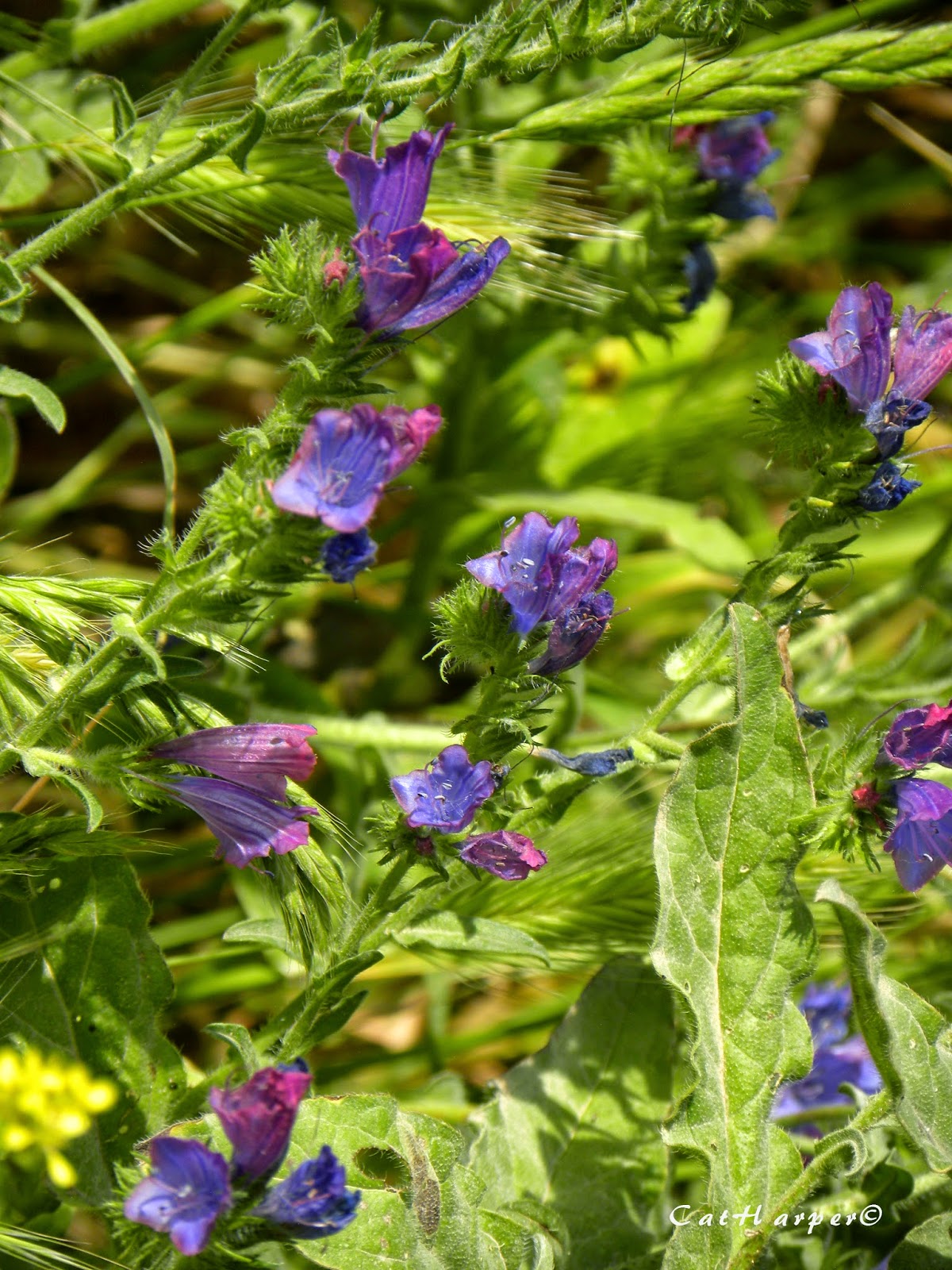When arrived at the top of the hill to the spot, where the busses were parked and there was a nice shady patio and a shop to buy food and drink, I turned around and looked at the amazing view! Of course, there is almost nowhere you drive in the Italian countryside that you won't see views like this one. So beautiful!
We were there in mid May so Spring was in full bloom. I am well aware that some would look at this view and see a broken down building in a weedy field but I find so much beauty here. And it's amazing how, when I am traveling, that I will stop to take photos of the areas not on the "tour", not the "main" attraction, and soon I will notice that other travelers will stop, see what I'm doing and will come join me. Try not to get too focused on the destination and look around during the journey, you won't be disappointed!
Purple Vetch were scattered all over the hillsides. At times the entire side of a mountain would look a bit bruised but when you got closer you would see that it was just covered with Vetch!
Mixed with the Vetch at Segesta were Plain Yellow Daisies. We were there rather early in the morning so this was a pop of sunshine for our day!
Up on the hill behind the shaded patio was the first glimpse of the Temple of Segesta. There was a trail that you could hike up to get to the Temple. Warning, it's very steep so those of you with any mobility issues will want to stay in the shade and have a cold drink instead.
We then took a tram to the very top of the hill where we encountered more ruins. We were allowed to wander freely on the paths around these remnants of this indigenous Elymian people and the Greeks.
There were some portions of intact walls as well as clear signs of where columns and other buildings had once been.
Wildflowers grabbed hold wherever they could fit themselves. More proof that nature reasserts herself whenever and wherever she can.
But what I found interesting is that in these ruins were brief glimpses of how ornate they must have been when they stood tall.
How these little details could be found even as they were surrounded by crumbling stone and wildflowers all these centuries later for us to see. It made me wonder about the people who had lived here and how this city on the hill looked. I thought about it again when we went to Taorimina, a city still very intact, which is located on a similar hill.
The views from the top were beautiful. The rolling hills of Sicily, the wildflowers in the grass and the white stone of the ruins made for a gorgeous view.
We took the trail to the top and started to realize that the views we had below were just the beginning!
At the entrance to the Amphitheater it felt like you could just step off into nothingness. It made me wonder about the people who attended performances here and if they felt that momentary fear as well.The fear was justified! These steps down to the stage level were STEEP! I could easily see how people could tumble to the bottom quickly!
The more esteemed you were the closer you were to the stage. If you remember the entrance you saw a pathway? That wandered down and around to the bottom to make it easier for those in power to get to their seats. Some of the seats had carvings in them...this was like reserved seating! No doubts on who was supposed to sit where!
And the views...oh my...the views. It felt like we could see all the way back out to Palermo from there.
The amphitheater was gigantic. When we were there we saw a group of students who were beginning to work out their performance for that evening, so shows are still held there for the public to come see!
You could choose to leave the amphitheater from 3 directions. From the bottom and back up the path, from the entrance and the way back down that we had come or you could head up to the ruins of the city at the top.
It was quite the climb to the top was not as easy as the original path down but it was interesting. I found even more beautiful wildflowers like these Queen Anne's Lace at the very top.
The only "wild life" we saw were birds and beetles. These beetles loved the Thistle that grew near the ruins.
It was on the way down from the amphitheater that we got our best views of the Temple of Segesta. The road is a curvy, winding road so you had many views out of the left hand side of the tram to see the Temple. You can see how big the architecture is when you notice how small the people are in the photograph! Don't forget to click on the small photos to see how amazing these locations are in the larger views!Sitting up on the slopes of Mt. Barbaro, the temple had a great advantage against marauders. One of the first things you notice is that there is no roof. This isn't from decay. Even in ancient times this temple was never completed. It got to this point and was mysteriously abandoned. However it does leave an interesting detail for the rest of us who come to visit centuries later.
Next week we'll head up to the place where we spent the rest of our day, Erice. This amazing medieval hilltop town is a romantic dream come true. I hope you will join me for this tour next week!
As always, you can find me on Facebook and on Instagram where I post lots of travel and nature photos every single day!
Cat
































































